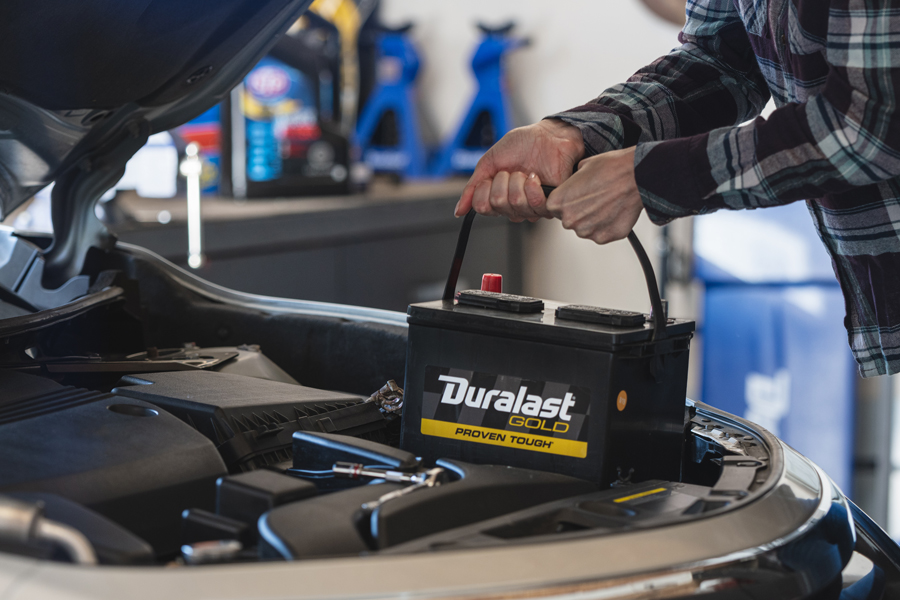Have you ever noticed the variety of sizes and shapes that batteries come in? Some are short and wide, while others are long and narrow. Batteries are categorized into standard sizes known as “groups.” The group number indicates the battery’s dimensions and provides insights into the devices it can power.
In this article, we’ll dive deep into Group 24 batteries. You’ll discover what makes them unique compared to other group sizes and explore their common applications. Read on to enhance your understanding of battery groups!
Understanding Battery Group Sizes
Batteries come in various sizes and shapes, from compact to large. Each battery size is assigned a number by the manufacturer, known as the “group.” This group number makes it easy to identify and categorize batteries. For instance, small square batteries are classified as Group 24, while larger, brick-like batteries used in trucks are designated as Group 31.
The group number indicates the battery’s dimensions in inches, ensuring that all batteries within the same group share the same size. This standardization simplifies the process of finding the right replacement battery. For example, Group 27 batteries fall between Group 24 and Group 31 in size. Understanding the group number is essential for selecting a battery that fits properly in your device or vehicle.
Read on Group 24 VS Group 31 for more differences.
FAQs About Group 24 Batteries
To help you navigate the specifics of Group 24 batteries, we’ve compiled a list of frequently asked questions. This section will address common queries related to their dimensions, applications, and compatibility, enabling you to make informed decisions about your battery needs. Let’s dive into the details!
1. What’s the dimensions of Group 24 batteries?
A Group 24 battery is a specific size commonly found in vehicles, backup power systems, and medical devices. These batteries typically function as deep cycle batteries, which are designed for sustained power rather than for starting engines.
The standard dimensions for a Group 24 battery are 10.5 inches long, 6.1875 inches wide, and 8.875 inches high. There are also several subcategories of Group 24 batteries, including 24F, 24H, 24R, and 24T, each with slightly different dimensions. While they share many similarities, these subtle size variations are crucial for ensuring you select the correct type for your needs.
2. Why is the dimension of Group 24 batteries important?
The dimensions of Group 24 batteries are crucial for several reasons:
Fit in Vehicles and Equipment: Proper sizing ensures that the battery will fit snugly in designated compartments in vehicles, RVs, and other equipment. An incorrect size can lead to installation issues or movement during operation.
Capacity and Performance: The size of the battery directly impacts its amp hour capacity and overall performance. Larger batteries generally have greater capacity, allowing them to deliver more energy over time, which is particularly important in applications requiring sustained power.
3. Are Group 24 batteries interchangeable with other battery sizes?
Group 24 batteries have specific dimensions that differentiate them from other battery sizes:
Comparison with Group 27 and Others: Group 24 batteries measure 10.5″ L x 6.1875″ W x 8.875″ H, while Group 27 batteries are larger, measuring 12.5″ L x 6.75″ W x 9.37″ H. This size difference means that while Group 24 can sometimes be used in applications designed for Group 27, it may not provide sufficient power or fit properly.
Interchangeability Situations: Batteries can be interchangeable if size constraints are not an issue and the application can handle the different power outputs. However, using a battery that is too small can lead to inadequate performance, so it’s essential to check compatibility.
4. How do the dimensions affect the performance of Group 24 batteries?
The dimensions of Group 24 batteries significantly influence their performance:
Amp Hour Capacity and Energy Output: The physical size of the battery affects its internal components, which in turn impacts its amp hour capacity and energy output. A properly sized Group 24 battery can maintain consistent power delivery, which is vital for applications like RVs and marine use.
Specific Applications: In RVs, for example, where power is needed to run appliances and systems for extended periods, the dimensions of the battery must align with the power requirements to ensure reliable performance.
5. What should I consider when measuring for a Group 24 battery?
When measuring for a Group 24 battery, keep the following tips in mind:
Measuring Battery Compartments: Use a tape measure to accurately assess the space where the battery will be installed, noting the length, width, and height to ensure a proper fit.
Terminal Locations and Height Restrictions: Consider where the battery terminals are located, as this can affect installation and connectivity. Additionally, check for any height restrictions that may impact whether the cover can close properly.
6. Can I use a Group 24 battery in a solar power system?
Yes, Group 24 batteries can be suitable for solar applications:
Suitability for Solar: Their dimensions and capacity make them a viable option for solar power systems, particularly in setups that require moderate energy storage.
Proper Fit with Solar Equipment: Ensure that the dimensions align with solar inverters and other components in your system. Proper fitting is essential for effective energy transfer and system reliability.
7. What accessories should I consider for a Group 24 battery?
When selecting accessories for a Group 24 battery, consider the following:
Compatible Accessories: Look for chargers, inverters, and battery trays that are designed to accommodate the dimensions of Group 24 batteries. These accessories must fit properly to ensure safe and efficient operation.
Guidance on Selection: When choosing accessories, always verify that they are rated for the specifications of a Group 24 battery, including voltage and amp hour capacity, to ensure compatibility and optimal performance.
Conclusion
Group 24 batteries are an excellent choice for basic to moderate power needs. They are well-suited for starting cars, supporting solar systems, and powering various electronics. Their widespread availability often results in lower costs, making them an affordable option.
When selecting a battery, it’s crucial to ensure you choose the correct size for your vehicle, truck, boat, or solar panel system to guarantee optimal performance.






